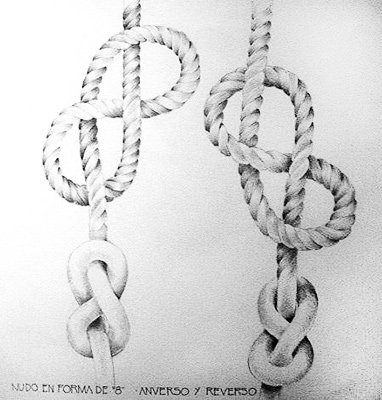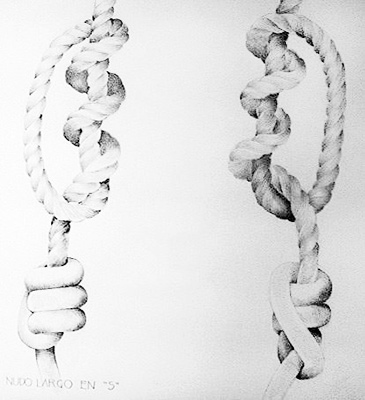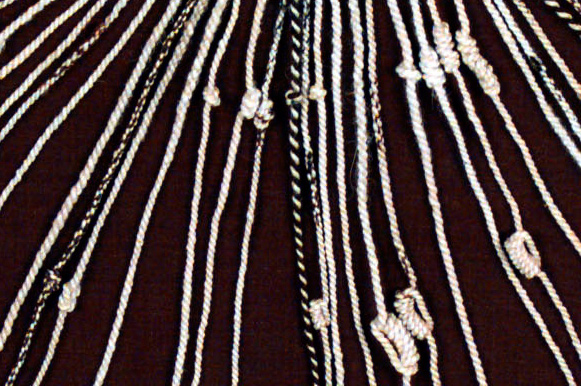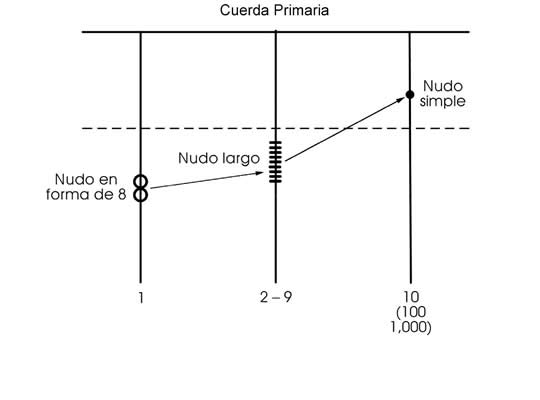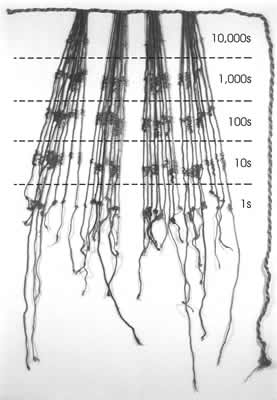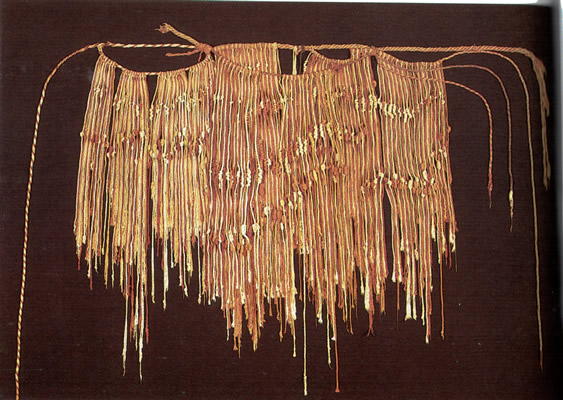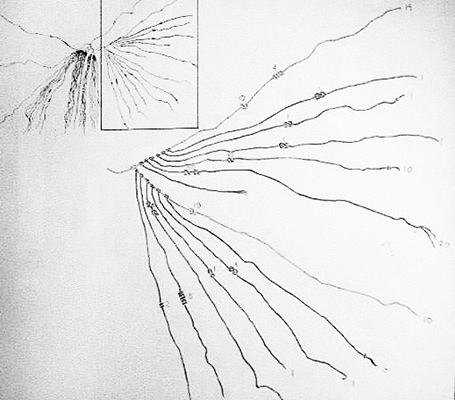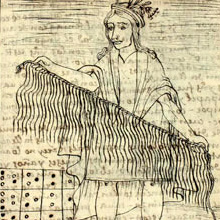Quipu: Counting with knots in the Inka Empire – 2003
- Record-keeping with knots
- The quipu and writing
- Tawantinsuyu , the Inka Empire
- The Quipu, and the needs of an empire
- Quipus and tribute
- Basic parts of a Quipu
- Making a Quipu
- Quipus and numerical values
- Narrative Quipus?
- Los distintos usos del Quipu
- Quipu of Arica
- Quipucamayoc , Lord of the Knots
- Quipus in the colonial era
- Epilogue
- To know more about Quipus
- Crédits and acknowledgements
Quipus and numerical values
Through careful study, quipu researchers have been able to decipher with a certain degree of accuracy the methodology that the quipucamayocs employed to tabulate numerical information, which was based on the Inkas’ own decimal mathematics system, and the representation of numerical values by means of different kinds of knots. To date, three principal types of knots and their values have been identified: Figure-eight Knots, which represent single units; Long Knots, which represent the units two through nine, in accordance with the number of turns they have; and Single Knots, with only one turn, which represent tens, hundreds, thousands, and tens of thousands. All of these knots can have a dominant, diagonal axis like the letter “S” or “Z,” just like the spin and ply of the threads and strings. Their values acquired meaning depending on the position they occupied on the Pendant Strings. On the lowest part of these strings were the units smaller than ten; on the level immediately above, the units of ten; next, the units of one hundred, and so on until reaching the tens of thousands level, located near each string’s attachment point to the Primary Cord. The zero was indicated by the absence of a knot tied in a place of value.
As an example, the number 3,105 would be indicated with three Single Knots situated in the thousands position, a Single Knot in the hundreds position, no knot in the tens position, and a Long Knot of five turns near the bottom of the Pendant String. In other words, three thousands, one hundred, no tens, and five ones.




































